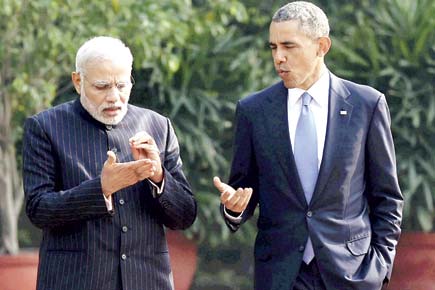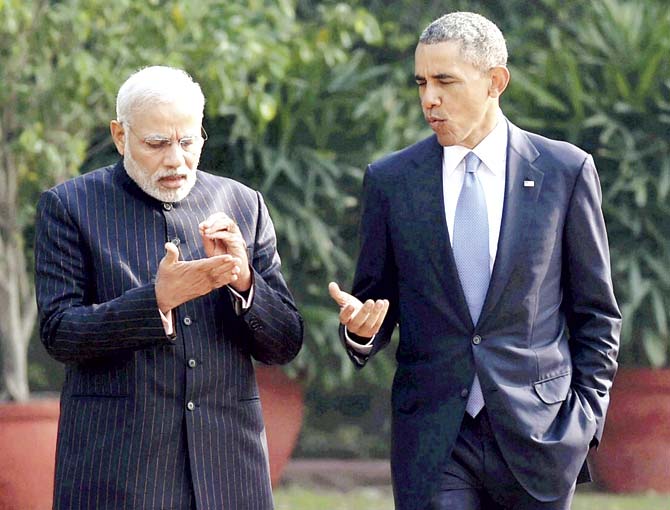In my chapter on “India and Regional Security Interests” in the book Power Realignments in Asia (2009), I began by saying that the world had entered the 21st century hoping that it had left behind one of the bloodiest centuries in history but “a handful of religious radicals exploded this myth on September 11, 2001, sparking off a chain of events that today threaten the world in unending violence and religious hatred

 In my chapter on “India and Regional Security Interests” in the book Power Realignments in Asia (2009), I began by saying that the world had entered the 21st century hoping that it had left behind one of the bloodiest centuries in history but “a handful of religious radicals exploded this myth on September 11, 2001, sparking off a chain of events that today threaten the world in unending violence and religious hatred.”
In my chapter on “India and Regional Security Interests” in the book Power Realignments in Asia (2009), I began by saying that the world had entered the 21st century hoping that it had left behind one of the bloodiest centuries in history but “a handful of religious radicals exploded this myth on September 11, 2001, sparking off a chain of events that today threaten the world in unending violence and religious hatred.”

The Obama-Modi chemistry might have contributed to the successes of the Modi visit earlier and the Obama visit now. But let us not be beguiled into believing that Obama came only because of that. He came to further US national interests, which are times conflicting, just as much we wanted him here for our interests. File pic
ADVERTISEMENT
The chapter also mentions that strong American military presence in Afghanistan and Iraq was proving to be counter-productive with the Islamic street bitterly antagonised towards the West, particularly the US. “Events in West Asia, as they unfold, will change the map of the region, leaving the US with little control over events, triggering instability across the region including Saudi Arabia. ... The map of West Asia is changing in a manner that will only create further violence and turbulence in the years ahead. India will now remain immune to the influences and pressures that would be exerted, consequently.”
Prophetic, one might say, now that we have the ISIS on the rampage in West Asia and Africa, while making inroads into Afghanistan, Pakistan and beyond. The after-shocks are visible in Europe. This is one kind of a tectonic turbulence occurring globally.
There were other tectonic shifts on the Asian plate in the new century. The established rise of China, the awakening of India and the resurgence of Japan at the same time in history had ingredients for cooperation, competition, confrontation and even conflict. All remain energy deficient, compete for the same resources and markets with China seeking a global role for itself.
I argued that a search for new mechanisms to deal with global crises that involve Asia and Asians to a greater extent had become necessary. Not that the US would fade away but that along with China, Russia, Japan and India, these powers would refashion relations with each other. These would determine the destiny of Asia for the next few decades. Meanwhile, other tectonic shifts in the making are the growing Russia-China relationship seeking a role for themselves.
It was in this changing context that another tectonic shift began to take place the changing US-India relationship over the last decade and more, but the India-US nuclear deal was stymied by the Nuclear Liability Bill. The deal was meant to be the master key that would open new vistas for India and for bilateral relations. The tectonic shift slowed down. It was in this context that President Obama visited India for our Republic Day celebrations.
The Obama-Modi chemistry might have contributed to the successes of the Modi visit earlier and the Obama visit now. But let us not be beguiled into believing that Obama came only because of that. He came to further US national interests, which are times conflicting, just as much we wanted him here for our interests. There has been enough informed and erudite commentary on what was and was not achieved on this visit. What we must always remember is that despite every intention to improve bilateral relations and greater co-operation on global issues like trade, climate change and other geopolitical issues, mutual differences will remain. It is these differences that have to be narrowed to take the relationship to a higher level.
Both India and America will continue to act in their own interests. The White House statement on Afghanistan describing the Taliban as an insurgency and not a terrorist organisation soon after President Obama returned having us believe that India has a role in the future of Afghanistan must have surprised New Delhi. Witness the fact that after lauding India’s democratic credentials, Barack Obama’s next stop was Saudi Arabia, one of the most repressive regimes. Witness also the fact that EAM Sushma Swaraj visited China soon after Obama departed. The timing of the test launch of the Agni 5 was probably not a coincidence. We also must learn to put aside our hyper-sensitivity and if Barack is our friend, then a little bit of friendly advice (which was also for his own domestic audiences) should be acceptable to us.
If we accept the US to do something for us, we too have to be able to offer a quid pro quo, remembering that in international relations, national interests are supreme, sovereignty is (sometimes) equal but power and reach are not equal. Dealing with a super-power that is extremely self-centred about its interests and what constitutes a threat to its way of life is not going to be easy.
The writer is a former chief of Research and Analysis Wing (RAW)
 Subscribe today by clicking the link and stay updated with the latest news!" Click here!
Subscribe today by clicking the link and stay updated with the latest news!" Click here!







